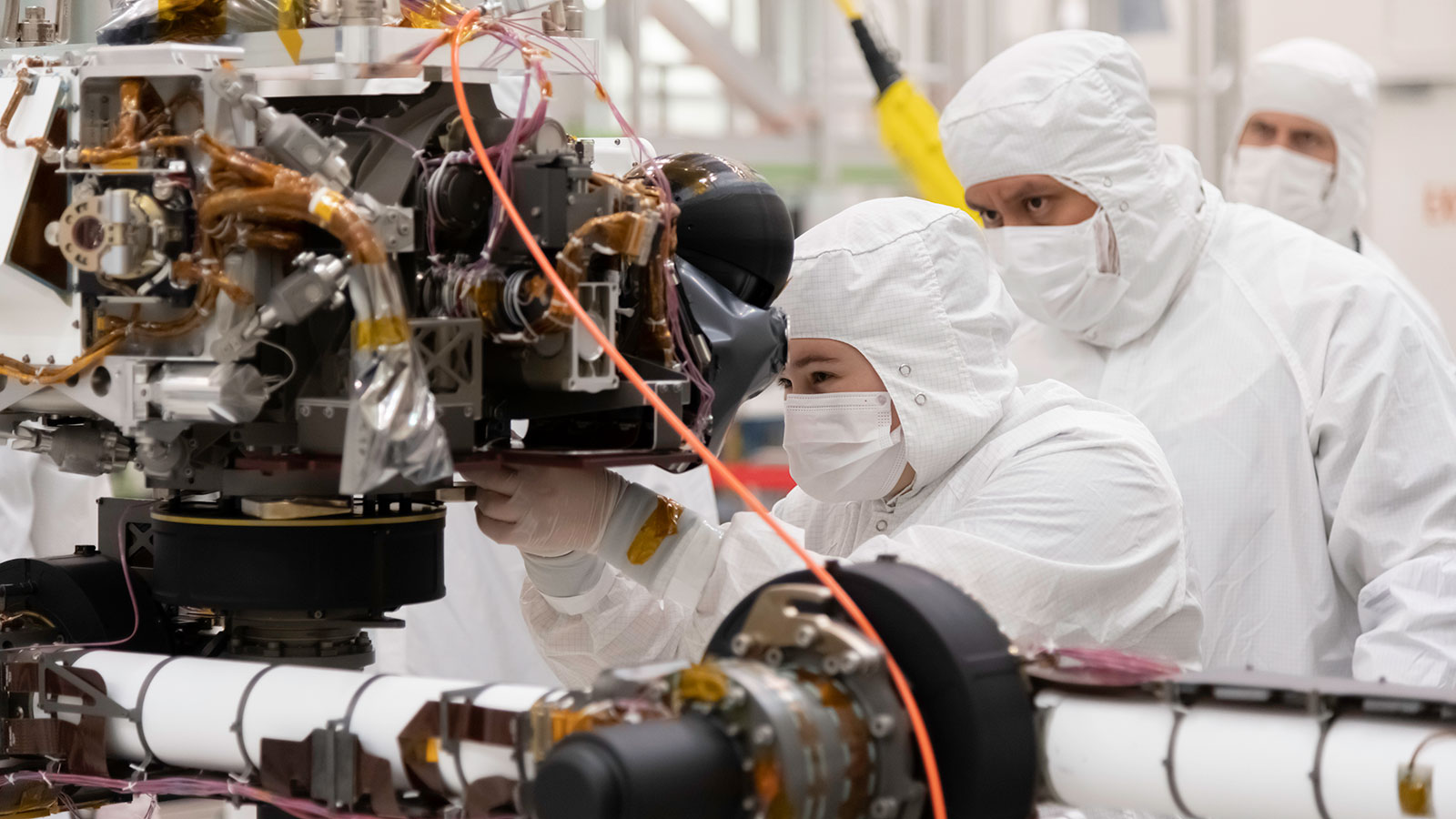
The countdown has begun for the last year of development before the Mars 2020 launches. The launch window opens on July 17, 2020, and runs until August 5, 2020, when the rover will be launched on its journey to Mars from Cape Canaveral Air Force Station in Florida.
Engineers at NASA have been hard at work on the rover, installing its camera, wheels, and robotic arm, and testing the spacecraft which will carry the rover’s ability to withstand the extreme environment of space. And progress on finalizing the rover is right on track, according to NASA.
“Back when we started this project in 2013, we came up with a timeline to chart mission progress,” John McNamee, Mars 2020 project manager at NASA’s Jet Propulsion Laboratory (JPL), said in a statement. “That every single major spacecraft component on a project with this level of innovation is synching right now with that timeline is a testament to the innovation and perseverance of a great team.”
In the image above, you can see the sensor turret being installed on the end of the rover’s robotic arm. The turret holds more cameras, several scientific detection tools like SHERLOC and PIXL, and a drill and coring mechanism for collecting samples from hard rock.
NASA also shared a video clip showing the JPL team at work installing the legs and wheels onto the rover. Watching it, you can get an idea of how much work and coordination is required to assemble something as complex and precise as a rover. All of the engineers wear “bunny suits” to avoid any contamination of the delicate rover components as they work in the JPL’s clean room.




